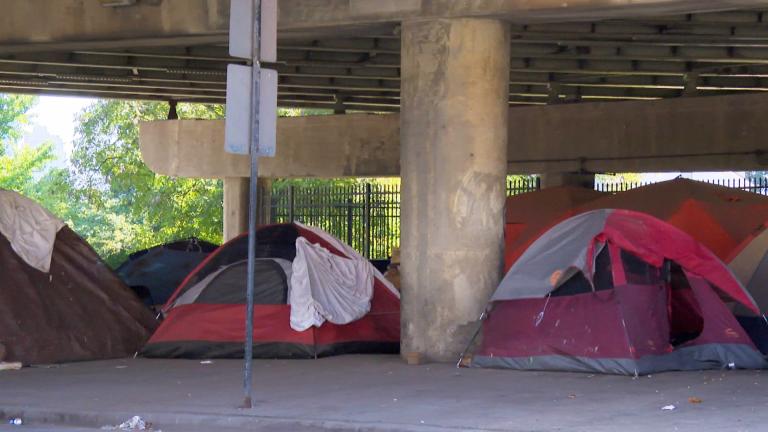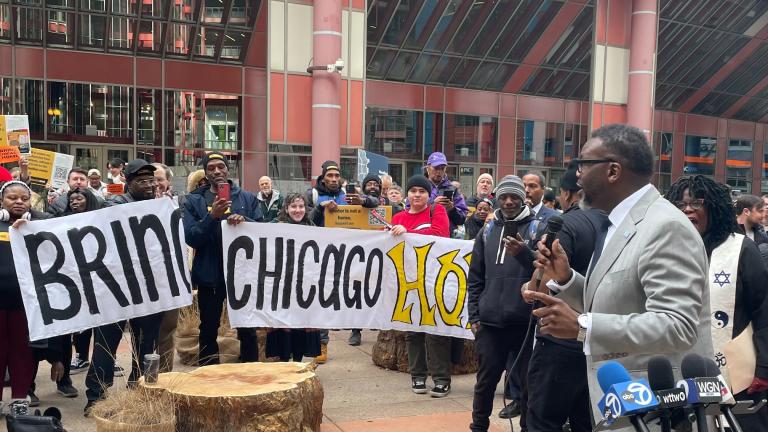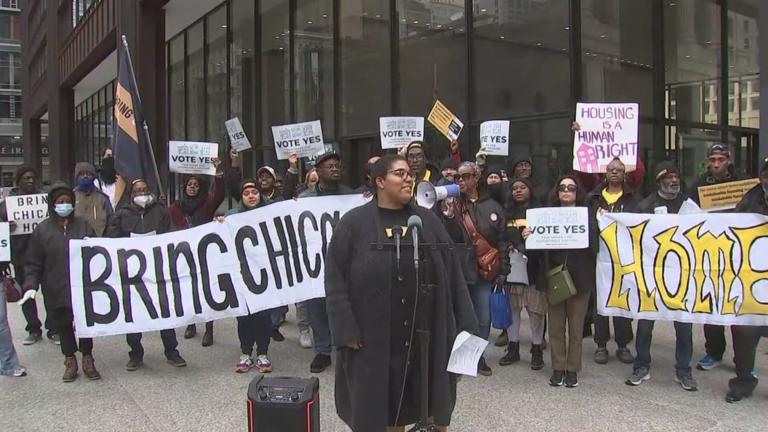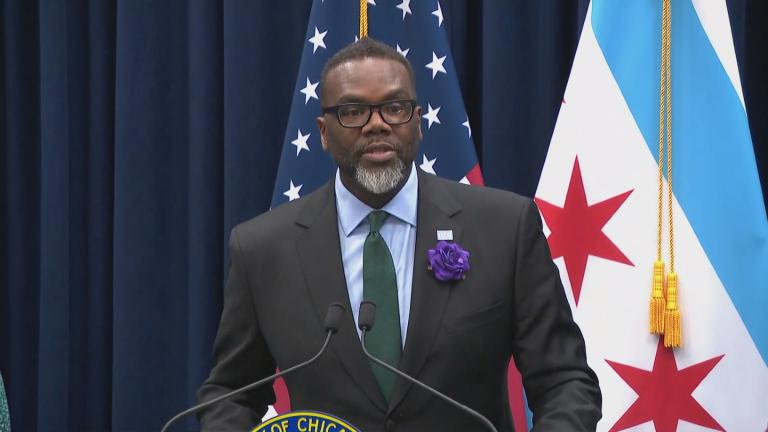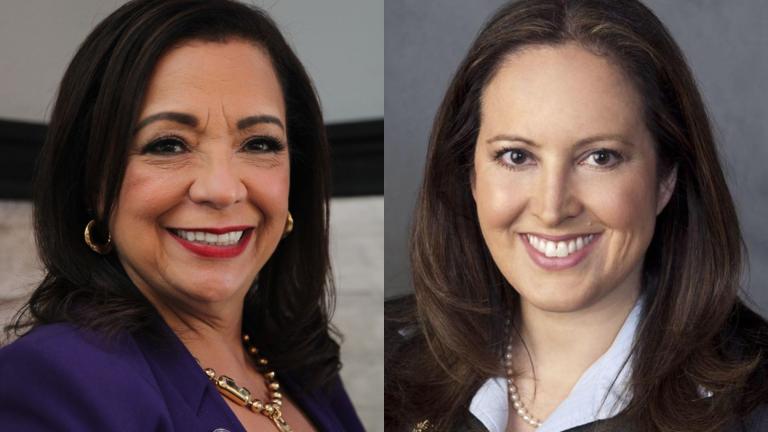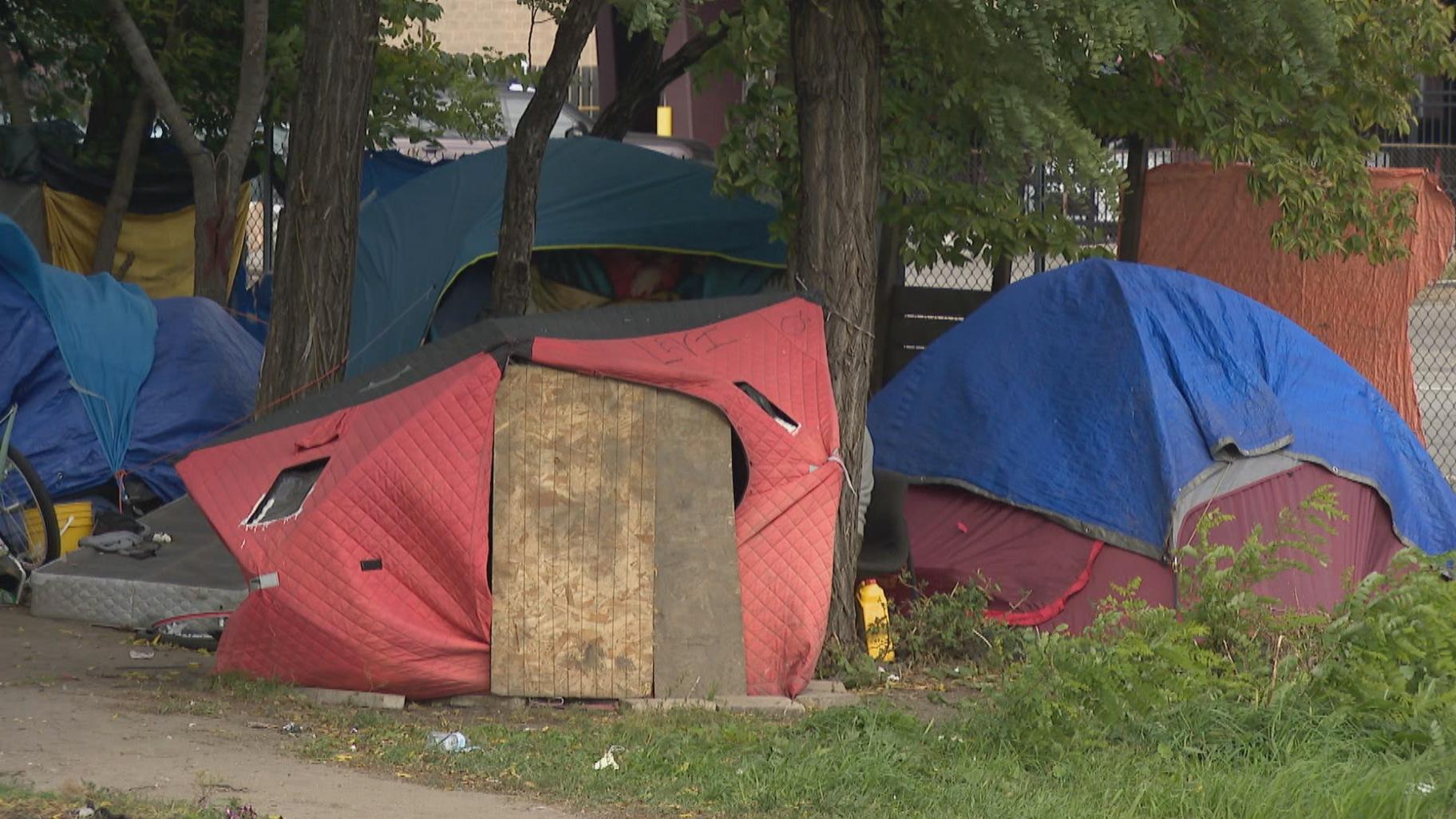 File photo of a homeless encampment. (WTTW News)
File photo of a homeless encampment. (WTTW News)
Illinois officials plan to increase funding to fight homelessness and the racial disparities that cause it statewide after a new report found Black Illinoisans are eight times more likely to be unhoused than White residents.
Gov. J.B. Pritzker on Thursday said Illinois will earmark $250 million in the FY25 budget — an increase of $50 million over last year — to support implementation of a statewide plan to combat the structural drivers of inequality in homelessness.
“Our approach understands that homelessness is not an issue of personal failing, but of historical discrimination and structural barriers that have driven inequality for Black families across the nation, and of course, right here in Illinois,” Pritzker said during a news conference at the University of Illinois Chicago.
Those funds include $35 million in rental assistance, $2 million in legal aid assistance for those in eviction court and $13 million to be spent on reducing racial disparities in homelessness, Pritzker said.
The governor’s remarks came after a new report on Black homelessness — published in collaboration between state officials and UIC’s Institute for Research on Race and Public Policy — found that Black Illinoisans are almost eight times more likely to experience homelessness compared to their White counterparts.
Iván Arenas, the institute’s senior associate director, said the conversation around homelessness often focuses on personal choices. But he said the report shows homelessness cannot be properly understood without examining the effects of structural racism.
“Differences in access to resources and opportunities for growth along racial lines make it more likely for Black individuals and families to become unhoused,” he said, “and once unhoused, make it much more difficult for them to regain their stability.”
According to Arenas, Black residents in Illinois have fewer opportunities to find stable housing, suitable employment, quality health care and affordable child care compared to their White counterparts.
Pritzker said the report is among the first statewide assessments of these disparities, and called it a “significant step forward” for Illinois in understanding the experiences and data that shape Black homelessness.
According to the Illinois Office to Prevent and End Homelessness, nearly 12,000 residents statewide experience homelessness on any given night, including more than 6,000 Chicagoans.
Federal officials estimated some 653,000 people experienced homelessness in 2023 — an increase of more than 70,000 year-over-year and the most since the country began using an annual point-in-time survey in 2007 to count the homeless population.
Pritzker in 2021 signed the Executive Order to Fight Homelessness in Illinois, which led to the creation of the state’s Interagency Task Force on Homelessness and Community Advisory Council on Homelessness, as well as the position of state homelessness chief.
That chief, Christine Haley, said Illinois officials are committed to ending the racial disparities in homelessness.
“Illinois has the second highest Black-White racial disparity in homelessness in the country,” she said. “We need to reflect wholly on that reality and utilize it to strengthen our collective will and resolve and close the disparity.”

